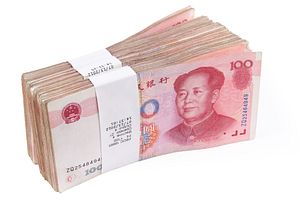It is happening again – China is facing another “cash crunch” as short-term borrowing costs jump, roughly half a year since the last incident of cash tightness in the world’s second largest economy. Interest rates rocketed up on Thursday and Friday of last week, especially money market borrowing termed at less than three months. On Monday morning, despite loud People’s Bank of China (PBOC) action late last week, rates spiked again.
Despite the experience of last summer, when persistent tightness in the interbank lending markets failed to have any obvious affect on the “real economy” (although we should also remember that there was a mini-stimulus being rolled out at that time), China’s stock markets reacted on the downside last week.
The slight bump in Shanghai’s main stock index on Monday morning reflects a feeling of optimism that the PBOC will not let this cash-crunch drag on for too long – after all the institution did take extraordinary measures to try and alleviate the situation late last week. Longer term rates still remain at more usual levels after all. However there is a lingering feeling of concern…
First, we are still weeks away from the Spring Festival Holiday – before which rates can be expected to climb as banks hoard their cash and reduce their lending to one another. It is a bit unusual for rates to climb so long before a holiday. And this is not the only cause of unease.
In fact, the main reason for the worry is that the market is aware that yet again the root cause for this “cash crunch” is the PBOC itself. China’s central bank had not injected liquidity into the money markets for more than two weeks before the crunch began late last week. The PBOC certainly seems to prefer the rates to be higher than they had been (although certainly not as high as they spiked as the crunch began – hence the extraordinary liquidity injections of recent days.
There could be several possible reasons as to why the PBOC again moved to push rates higher. Many analysts believe that part of the reason for the PBOC’s action is to punish banks who are relying dangerously on money market funds to manage their Wealth Management Product (WMP) business – itself a key process in China’s shadow banking system. Shadow banking has enabled China’s rapid credit expansion to continue despite official attempts to control the more traditional formal lending sector. It has also kept credit flowing to dangerously unbalanced economic-sectors which would otherwise already have begun a painful period of consolidation and reform.
Zhou Xiaochuan, the PBOC’s governor and a strong proponent of financial reform, has interest rate liberalization and the end of financial repression as an end goal. For this to happen, interest rates must be closer to where they might end up if freed from official controls. Otherwise, a liberalization of rates would result in a sudden and disruptive shock with the associated financial stress that such a shock would entail.
Hence, although it is likely that the PBOC will inject cash during its regular operations this week, market participants who take the Third Plenum’s reformist line seriously should expect China’s central bank to continue gradually preparing China for a new interest rate regime – both to improve the credit allocation process and to force unbalanced sectors into reforms. Even if it is “two steps forward, one step back” changes, it is pretty clear in which direction Zhou Xiaochuan, Li Keqiang, Wang Qishan and Xi Jinping are trying to move.

































